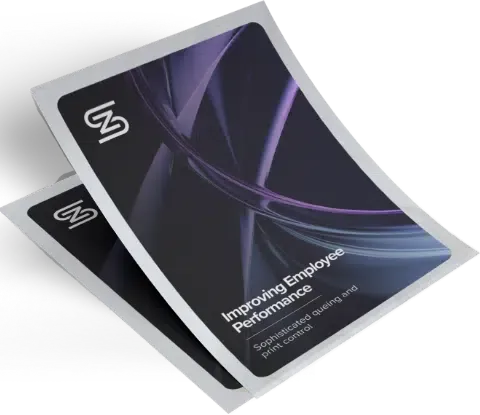The wave of Artificial Intelligence (AI) has promised transformative changes across sectors, yet its application in the print-on-demand industry reveals a landscape often muddied by misconceptions and marketing hyperbole. The crux of AI – learning, decision-making, and evolving – seems lost in translation, replaced with solutions that are more about brute force than true intelligence.
The Misconception of AI in Print-on-Demand
A critical look at the industry reveals a trend: numerous offerings labeled as AI that scarcely embody the technology’s core principles. The allure of AI has led to its overuse as a buzzword, overshadowing the nuanced, intelligent capabilities that define genuine AI applications.
- Imposition Solutions: The promise of AI-driven imposition tools often boils down to executing thousands of layout simulations to minimize waste. This method, while technically an improvement on human driven applications, lacks the adaptive learning and decision-making hallmark of AI. True AI would analyze a single input set, leveraging past learnings to optimize layout instantly, a stark contrast to the repetitive, slow, non-learning nature of current practices.
- Scheduling Systems: Another purported application of AI is in workforce scheduling, where systems cycle through countless staffing configurations to appease as many variables as possible. However, this too misses the mark. Real AI would not only match staff preferences but also integrate deeper insights – like team synergy and productivity impacts – into its scheduling calculus, going beyond mere trial and error to a nuanced understanding of organizational dynamics.
- Customer Service Bots: A prevalent claim in AI application is customer service bots. While some do utilize natural language processing, a facet of AI, to interact with customers, others are mere decision trees, lacking the ability to learn from interactions or improve over time. True AI in this space should transcend scripted responses, adapting and evolving to provide increasingly personalized and insightful support.
Understanding What AI Is – and Isn’t
At its core, AI involves systems capable of learning from data, making decisions with minimal human intervention, and improving over time. This definition sets a high bar, distinguishing genuine AI from solutions that simply automate tasks without learning or adapting. The difference lies in the capability for continuous improvement and the application of learned intelligence to novel situations, far removed from the static algorithms often passed off as AI to unsuspecting managers and stakeholders.
For businesses exploring AI solutions, the challenge lies in discerning genuine AI from its imitations. It’s crucial to question whether a solution learns and adapts, how it integrates with existing workflows, and whether it offers scalable improvements over time. The potential for AI to revolutionize print-on-demand is immense, from optimizing production lines to personalizing user interactions, provided that the industry moves beyond the allure of buzzwords to embrace the transformative power of real AI.
Conclusion and actions
The journey toward integrating AI into print-on-demand requires a clear-eyed assessment of what AI can truly offer. As we peel back layers of misconception, the path forward involves investing in technologies that not only promise but deliver on the potential for adaptive, intelligent solutions.
So what specific action can be taken now? This space is evolving and evolving fast but true AI remains, for the most part, an illusion for print on demand applications as of early 2024. But that doesn’t mean that immediate action should not be taken now to prepare for AI.
What every AI application has at its heart is a training data set. The AI learns based on patterns in the data. For every business that has its eye focussed on another step shift in productivity through applying AI, they should be investing in the technologies now that capture every single action that occurs in their plant. Every action by every process, person and machine should be captured with identity attached against the action so as to provide the training data set the AI can be trained on.
It is what we call the who, what, where and when of plant activity. The critical first step is to select the IT systems that give you this capability.
Exploring AI’s Potential in Print-on-Demand?
For those keen to see how ZenSmart is harnessing real AI to transform print-on-demand, visit zensmart.ai. Discover the real difference AI can make in streamlining processes, enhancing efficiency, and driving innovation in the printing industry.




